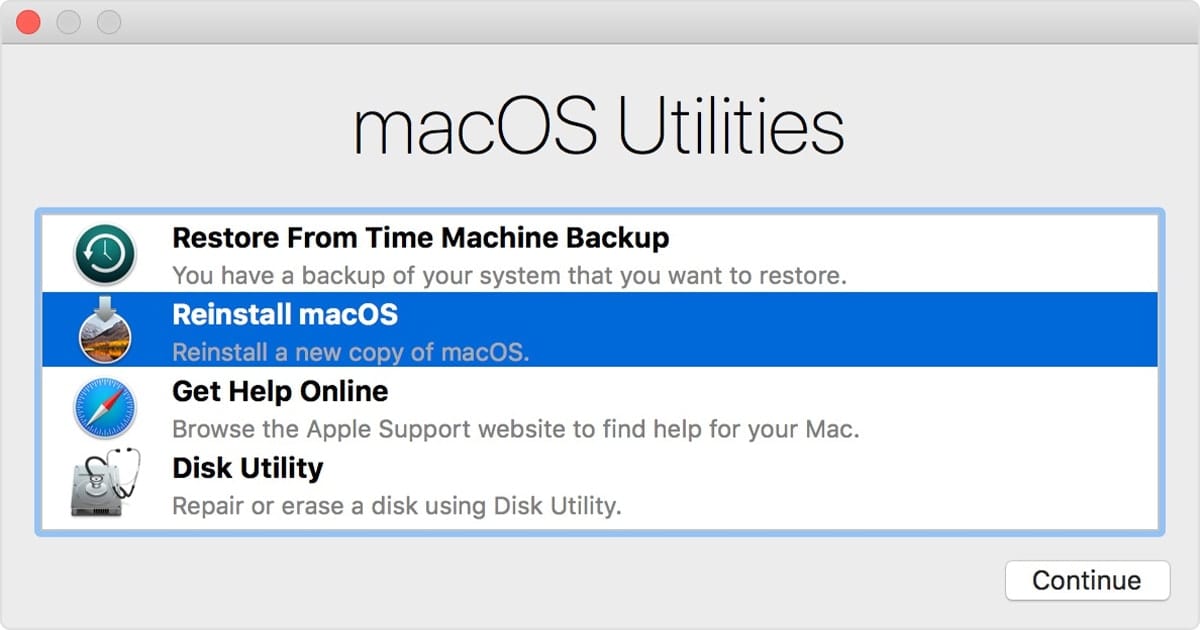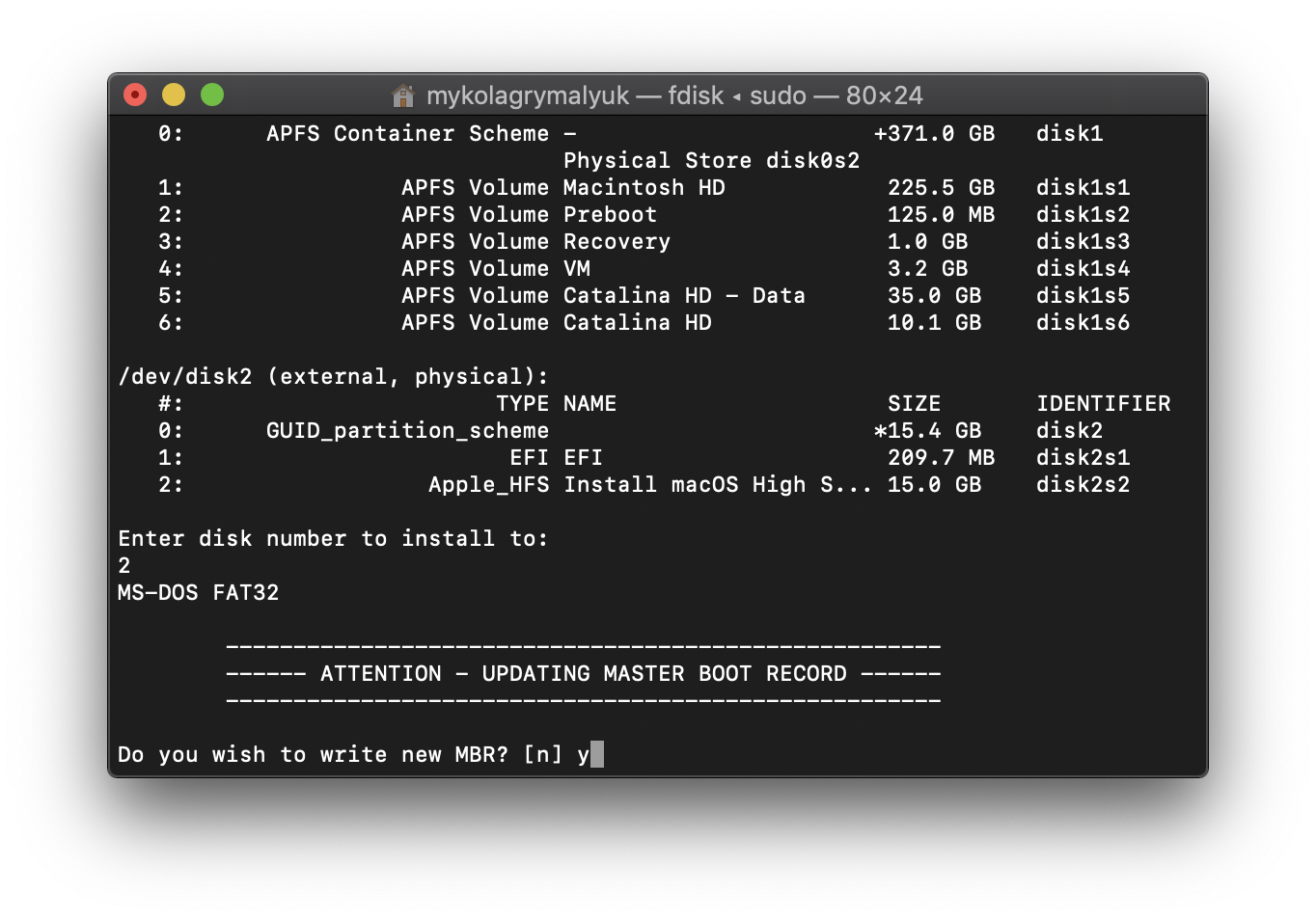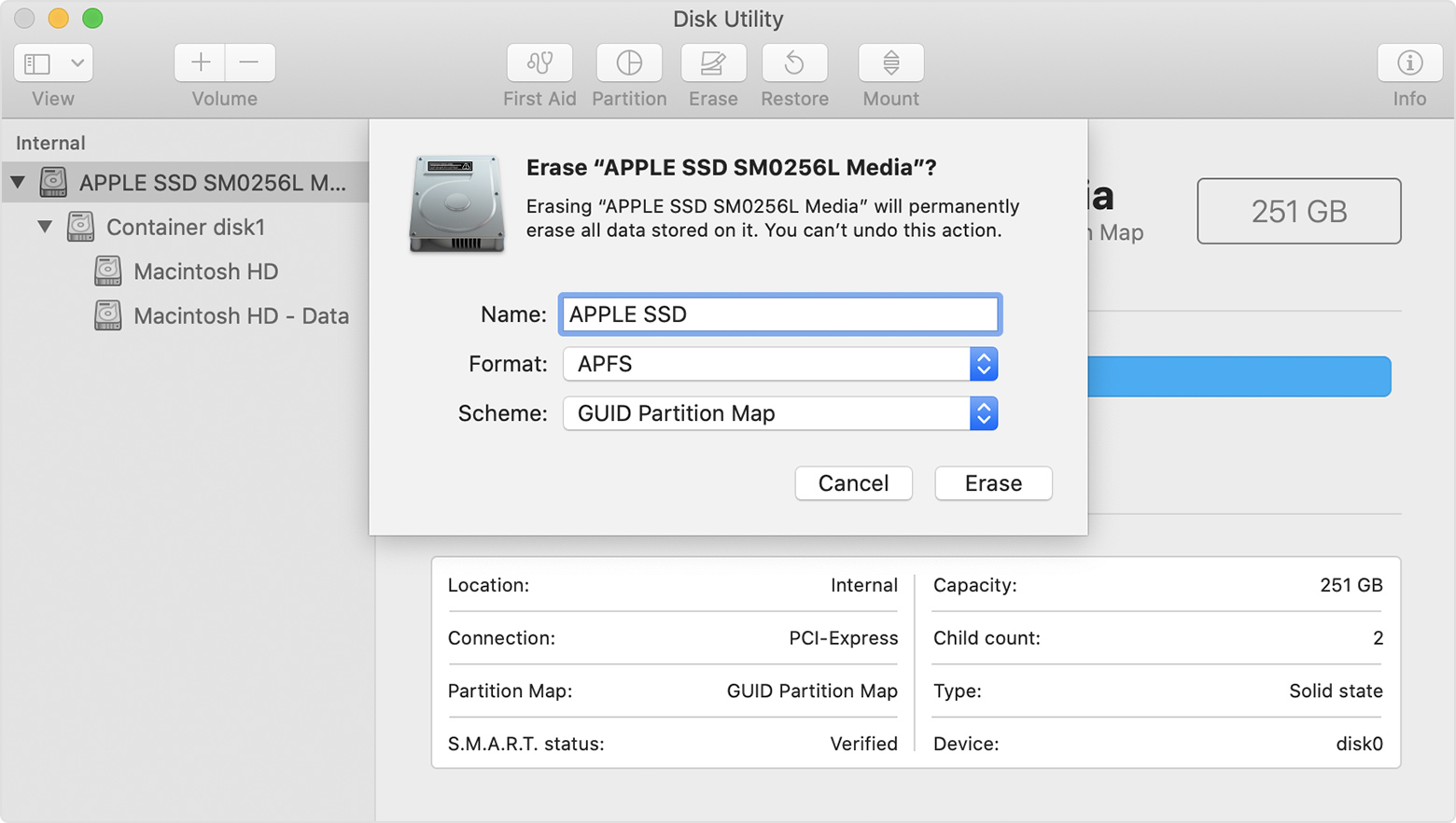macOS Catalina is slightly outdated since the release of macOS Big Sur in November of 2020. Nevertheless, many users prefer to stick with it because it's much more familiar visually. And it offers a bunch of expanded features, such as a screen extension with an iPad or the new Apple Podcasts app.
The problem is that it might not always work as intended. Glitches in macOS Catalina are commonplace: in fact, all existing operating systems like Mojave or High Sierra could freeze and crash from time to time. No software is immune.
- Macos Catalina Recovery Mode
- Macos Catalina Recovery
- Macos Catalina Recovery Utility
- Macos Catalina Recovery
When it happens, it goes straight into Recovery Mode. No regular log-in screen is shown - neither with a grey background, the default Catalina background, nor my own background (IE no pre-decryption or post-decryption log in). Instead I get a long wait on a screen with the apple logo, and then Recovery Assistant. To use macOS Recovery, hold down Command (⌘)-R on your keyboard immediately after restarting your Mac or immediately after your Mac begins to restart. Continue holding the keys down until you see the Apple logo or a spinning globe. Startup is complete when you see the utilities window. Here, you replace the name of the macOS that the installer has (for instance use Install macOS Catalina.app for macOS Catalina) and replace MyVolume with the name of the bootable installer, then press Return. C) Type the admin password when prompted, then press Return. The password characters won’t show up on the screen. When you hold down ⌘r at boot, your Mac selects the recovery volume associated with the Startup Disk selected in System Preferences, so you can change the recovery volume by changing the Startup Disk. Starting with macOS Catalina, the recovery volume requires a login for some reason. Part 1: How to Boot Mac in Internet Recovery Mode. Along with the introduction of a locally stored recovery volume, Apple introduced its Internet Recovery service that allows your operating system to download contents of the recovery hard disk partition from the company's service.
But what do you do in this case? The surefire way to deal with jaded performance is to reinstall macOS Catalina altogether. Read through our guide below to learn how.
How To Reinstall Mac OS Catalina
It’s important to note that when you reinstall macOS Catalina the process simply updates the operating system and doesn’t affect any files on your hard drive or user files or even settings. That makes reinstalling principally different from performing a clean install, which erases everything.
Here are the proper steps to follow to reinstall mac OS Catalina.
1. Back up your Mac first
By default, the best thing you could do before making any significant changes to how your Mac works is to back it up. Backups are just like saves before encountering challenges in video games — represent the point you can always come back to.
There are lots of great backup solutions on the market to suit every need. If you don’t have the time to search for something specific, your Mac features a decent native option — Time Machine.
To get Time Machine started:
- Connect an external USB or WiFi hard drive to your Mac
- Go System Preferences ➙ Time Machine
- Click on Select Backup Disk…
- Press Use Disk
2. Delete junk off your Mac to speed it up
There’s nothing better than the feeling of a brand new Mac with a brand new macOS. If only the latter is new, the experience could be subpar. Trying to get the most out of macOS Catalina on your older machine might be a challenge. But don’t hurry to your local Apple Store just yet — not all is lost.
Just like the dust behind your couch or on the top of your kitchen cupboards, small bits of system files, caches, and hidden libraries tend to aggregate over the years and never get deleted, eventually slowing down everyday processes. While it’s possible to clear out some of them manually, others require specific technical knowledge and lots of time.
Luckily, there’s a professional automatic solution available — CleanMyMac X. Optimizing behind-the-curtain processes on your Mac with CleanMyMac X is no more difficult than clicking a single button:
- Download a free version of CleanMyMac X.
- Open the app and navigate to System Junk in the left-side panel.
- Click Scan and wait for the process to complete.
- When done, press Review Details.
- Uncheck anything you’d like to keep and click Clean.
Now your Mac is free of all the pointless log files, user caches, language files, old updates, and more. Which directly translates into improved processing power, memory usage, and response time. At last, your Mac is ready to take full advantage of macOS Catalina.
3. Reinstall macOS Catalina in Recovery Mode
With your Mac in top shape, it’s time to get that macOS Catalina download link. Surprisingly, you won’t find it in Software Update or even App Store (where it used to be in macOS High Sierra).
The correct way to reinstall macOS Catalina is to use your Mac’s Recovery Mode:
- Restart your Mac and then hold down ⌘ + R to activate Recovery Mode.
- In the first window, select Reinstall macOS ➙ Continue.
- Agree to the Terms & Conditions.
- Select the hard drive you’d like to reinstall mac OS Catalina to and click Install.
Automatically update all your software for Catalina
The reinstallation process will start shortly and roughly take 30 minutes. When complete, your Mac will start up as usual. No files should be lost, but it’s always a good idea to check CleanMyMac X’s Applications Updater to see if you can improve compatibility of the new macOS with any of your existing apps:
- Launch CleanMyMac X.
- In the left-side panel, navigate to Updater.
- View any available updates and their notes and click on Update.
This Updater tool in CleanMyMac X automatically searches for latest available versions of ALL your apps. One or two clicks and everything feels fresh. It even updates the macOS file itself.
Trust in your backup
Macos Catalina Recovery Mode
Finally, in case you notice any files or apps missing, or settings misconfigured, you could open up Time Machine to restore a specific folder or the whole backup from the step one:
- Launch Time Machine from Applications.
- Simply scroll all backup versions to find the file you’re looking for.
- Click Restore.
If you decide to restore the whole backup, make sure to then repeat the whole process to optimize your Mac and reinstall macOS Catalina as detailed above. The good thing is that more often than not the reinstallation works wonders right from the first time.
This article will tell you what to do when the macOS Recovery mode not working from two aspects: one is to fix the macOS Recovery mode not working issue, the other is to use other ways to complete what needs to be done in macOS Recovery mode.
And most of all, it will show you how to restore your Mac without Recovery mode in detail:

- 1. When your Mac is with OS X 10.6 Snow Leopard or older system
- 2. When your Mac is with OS X 10.7 Lion or later system
- 3. General way: Install macOS from the created bootable installer
What you can do with macOS Recovery mode
macOS Recovery is a special mode on Mac, which loads macOS built-in recovery tools from a special disk partition (in the startup disk) that holds a recovery image along with a copy of the macOS installer. In the macOS Recovery mode, you can:
- Use the Restore from Time Machine Backup utility to retsore your unbootable Mac, or recover the lost important files.
- Utilize the Reinstall macOS feature to reinstall the system when the current one has something wrong like frequent system crashes, running slowly.
- Use the Terminal to do some tasks like checking the conditions of your Mac and fix some errors.
- Take advantage of the Disk Utility to check and repair internal and external disk issues.
Macos Catalina Recovery
How to confirm Mac Recovery mode not working
However, the damn macOS Recovery mode was out of work at critical moments. When you press the Command + R keys during your Mac re-startup, one of the following situations has occurred:
- You've booted into the normal mode (no macOS Utility window shows up).
- Options on the screen have frozen up in macOS Recovery mode.
- A black screen has occurred on your Mac when you enter into recovery mode.
Why & how to fix macOS Recovery mode not working
All the above situations manifest that the macOS Recovery mode is not working. So why your Mac won't boot into Recovery mode properly? Here are the possible reasons and corresponding fixing tricks:
- Your keyboard is fault. The keyboad is connected to your Mac via Bluetooth. When there's a connection issue, the keys can't work. First, you can reconnect it to your Mac. If it still can't work, replace it to another keyboard.
- Your Mac has a T2 chip or M1 chip. The way to boot into macOS recovery mode is different. So, the Command + R keys are not working. For the Mac with a T2 chip, try Option/Alt + Command + R keys when rebooting your Mac. While for an M1 Mac: Turn on your Mac and hold the power button until you see the startup options window, which includes a gear icon labeled 'Options'. Select 'Options', then click Continue.
- Your M1 Mac hasn't updated to the latest version. Although the first delivered M1 Macs installed macOS 11 Big Sur, the system has some bugs. And these bugs may disturb your use of some of the utilities on your Mac, like Recovery mode. To repair the bugs, Apple has released updated macOS versions with patches to fix the bugs. So, it is recommended to update your macOS 11 to the latest version.
- The recovery files for macOS Recovery mode are corrupted or mistakenly deleted. Usually, the recovery files are stored on startup disk. In such a situation, you have to reinstall macOS or restore your Mac from Time Machine backup (if you had backed up with Time Machine before).
- Mac Recovery mode has some diversities in different macOS versions. The macOS Recovery has a set of recovery tools, which are controlled by the terminal. Under different macOS Recovery modes, the commands that the terminal executes vary. So, you can find some recovery tools in certain macOS version but cannot in another. You can try to upgrade your macOS.
To restore your Mac without Recovery mode
However, if the macOS Recovery mode still doesn't work, what you can do to reinstall system or restore your Mac? No worries. Here will offer you some ways.
As for most of you who use macOS Recovery mode to restore your Mac, the common situation is that your Mac won't boot. At this time, firstly you need to utilize some data recovery software like iBoysoft Data Recovery for Mac to recover your data. iBoysoft Mac Data Recovery (Supported: macOS 11 - macOS 10.2 & OS X 10.11 - OS X 10.7) can help you recover data from an unbootable Mac.
• Recover data from Mac that won't trun on
Then, try the following ways to restore your Mac. The restoring ways varies according to different macOS versions.
Your Mac is with OS X 10.6 Snow Leopard or older system
There's no macOS Recovery utility on your Mac. You have to reinstall OS X with the original disk that has preinstalled OS X. The original disk usually offered for you along with your Mac.
Your Mac is with OS X 10.7 Lion or later system
You can try macOS Internet Recovery mode. macOS Internet Recovery mode is also a restoration tool that connects directly to the server at Apple's to download an original version of the OS to be installed on your computer.
With macOS Internet Recovery mode, you can restore your Mac from Time Machine backup, reinstall OS, use Disk Utility to check disk errors. The requirement for using Internet Recovery mode is the available network. It only supports networks using WEP and WPA security.
To boot into Internet Recovery mode, you should follow these operations:
- Press and hold Command + Option/Alt + R keys when rebooting your Mac.
- When you see a spinning globe and the message 'Starting Internet Recovery' appears on the screen, release the keys.
- Wait for the progress bar to load. Then, you'll see the macOS Utility window on the screen.

Then, if you have a Time Machine backup, you can use the Restore From Time Machine Backup utility to restore your Mac. If you want to reinstall macOS, select the Reinstall macOS feature, and then follow the onscreen steps to reinstall a new copy of macOS.
General way: Install macOS from the created bootable installer
If you don't have an original disk preinstalled with OS X installer and the Internet Recovery mode also not working due to network issues, the last way is to create a bootable installer and install macOS from it. As this method is a little bit complex, here will show you the detailed steps.
Preparations:

1. A USB drive formatted as Mac OS Extended with at least 16GB in size.
2. Get macOS installation files. Find a healthy Mac, download the current macOS of the healthy Mac, like Catalina in the App Store. Note that don't click on install at this time. If you want an update of the current system, go to System Preferences > Software Update. Then download the macOS installation files. The installation files are in the Application folder by default.
3. If your Mac with Apple T2 chip (Check in Apple menu > About This Mac), you should enter macOS Recovery mode > Startup Security Utility > check Allow booting from external media.
Next, create a bootable installer:
- Connect the USB drive to the healthy Mac.
- Open Finder > Applications > Utilities > Terminal.
- Type the following commands in Terminal and press Enter. Here the Applications means that the installation files are in the Application folder of the Mac. MyVolume means where the installation files will be saved (the name of your USB drive). Here take macOS Catalina as an example:
Macos Catalina Recovery Utility
Note: The command line is suitable for other macOS versions, only replace /Install macOS Mojave.app/ to the desired version, like /Install OS X El Capitan.app/.
- Type your administrator password if required and press Enter.
• How to recover/reset your forgotten Mac password
- Type Y when warning you that it will erase the USB drive and press Enter.
- Then, the installation files on the Mac will be copied to the USB drive.
When the copy work is done, it will show 'Copy complete and Done'. Now, you've created the macOS bootable installer on your USB drive successfully. You can eject the USB drive.
The last, install macOS from the bootable installer:

For an Apple Silicon M1 Mac VS. Intel-based Mac, the operations are different.
Note: Your Mac should connected to the internet and compatible with the version of macOS you'll install.
For an Apple Silicon M1 Mac:
- Attach the USB drive with the bootable installer to your unbootable Mac.
- Hold the power button when booting your Mac until the startup options window appears.
- Select the volume that contains the bootable installer.
- Follow the instructions to finish the installation.
For an Intel-based Mac:
- Connect the USB drive with the bootable installer to your unbootable Mac.
- Hold the Option/Alt key at once after rebooting your Mac.
- Release the Option/Alt key when you see the bootable volumes.
- Choose the volume having the bootable installer.
- Follow the instructions to finish installation.
After reinstalling macOS or OS X, you can restore the data from your backup (If had).
Macos Catalina Recovery
With a set of recovery tools, macOS Recovery plays an important role in restoring your Mac. However, the macOS Recovery mode not working issue is not rare, which brings a lot of troubles for you. Hopefully, you can try the solutions in this article to fix the macOS Recovery mode not working problem. Moreover, get some alternatives to reinstall macOS and restore your Mac when Mac Recovery mode not working.
• How to recover data from an Apple Silicon M1 Mac